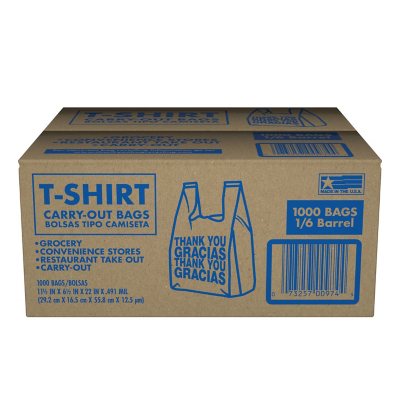Friendly, inviting and extremely easy to hold, these White T-Shirt Carry-Out Bags are an absolute essential for convenience and grocery store purchases. Each box comes with 1,000 individual bags.
How Can 1/6 Barrel T-Shirt Carry-Out Bags Help Me?
Thanks to their “t-shirt” design, these take out bags make it easier to carry your products. If you’re running a business and want to provide your customers with the very best, then these take out bags can be very useful. For those interested in acquiring a large number of plastic carry-out bags for any need, then this item is perfect for you.
Is This Pack of T-shirt Carry-Out Bags Sustainable?
With up to 1,000 separate bags in this one package, this is the ideal choice for anyone in need of many t-shirt carry-out bags. Made out of plastic, these bags are 100% recyclable, so you can use them while maintaining a guilt-free conscience. Convenient and environmentally friendly, the T-Shirt Carry-Out Bags are truly a must-have.
Easy and Safe Storage
While this is a big box that carries a massive number of plastic bags, the box is also dependable. Reinforced with a strong, cardboard exterior, a box like this can be stacked among others without suffering damages. It can be safely stored in a garage, pantry or a storage room with little worry.






by Chris
Excellent price for 1000 bags!!
by John
Perfect for trade show giveaways.
by Steve
Works great for what we need.